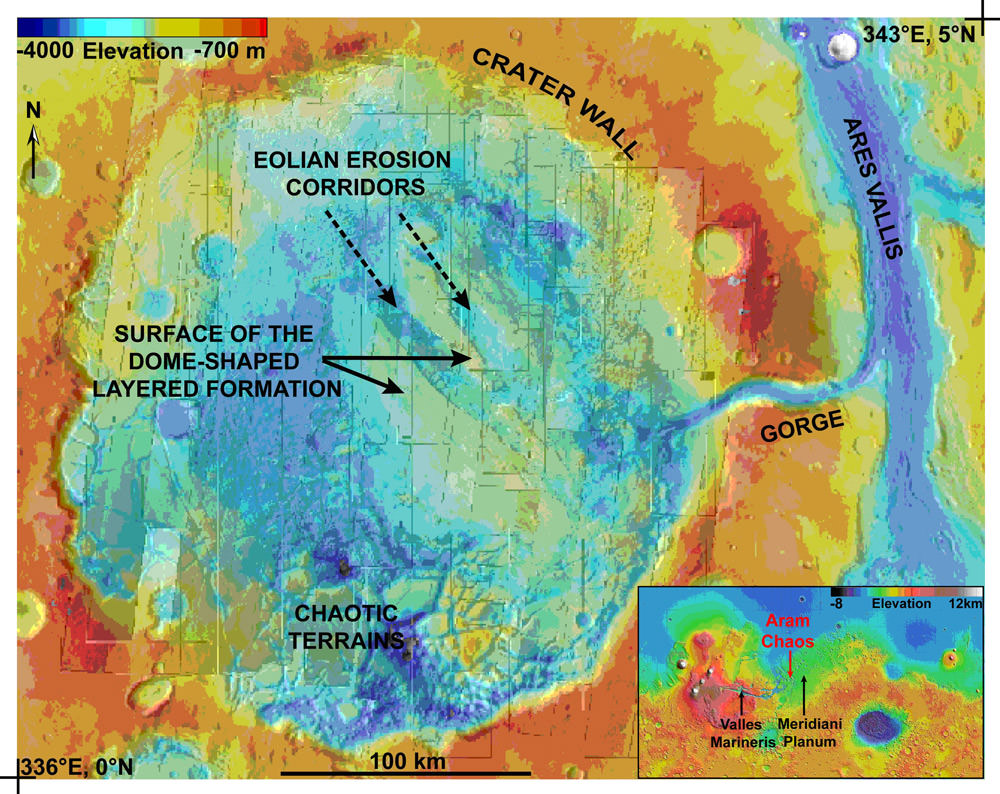[/caption]
The picture of Mars’ wet history is gradually becoming more comprehensive. This time, new observations by the European Space Agency’s Mars Express satellite have revealed concentrations of sulphates and ferric oxides in the 175 mile-wide (280 kilometres) Aram Chaos region, an ancient crater basin. Although the true nature of these compounds remain elusive, it could reveal past atmospheric precipitation, otherwise known as rain and snow…

Now, from Mars orbit, the ESA Mars Express has used its OMEGA instrument (a.k.a. the Visible and Infrared Mineralogical Mapping Spectrometer) to map an equatorial region to gain clues about Martian history. The results beamed back to Earth are both exciting and a little peculiar.
It is well known that Mars is covered in ferric oxides, contained within the dust that blankets much of the planet. This is the compound that gives Mars its characteristic red hue. However, looking deep into the crater of Aram Chaos, there is a four-fold increase in the spectral signature of ferric oxides. This has led ESA scientists to believe this is indicative of a specific concentration mechanism. On Mars, ferric oxides are usually found with sulphates, but in this location, strong winds have blown away the lighter sulphates, leaving the ferric oxides behind, allowing the Mars Express spectrometer to measure the high concentrations.
On Earth, we commonly know ferric oxide as rust. Rust forms when there is a reaction between iron and atmospheric oxygen, facilitated by the presence of water.
“They have accumulated in dark deposits at the bottom of sulphate cliffs,” said Stephane Le Mouelic of the University of Nantes in France. This suggests that the ferric oxides have been uncovered by eolian (wind) erosion before being eroded themselves, dropping to the bottom of sulphate enriched cliffs. Driven by Martian winds, the ferric oxides went on to enrich dunes in the region.

This is an intriguing study and it is possible that other regions will show similar accumulation processes, but are covered by other material. “OMEGA is sensitive to the first hundreds of microns of the surface. So, a layer of Martian dust just one millimeter thick will hide the signature from us,” said Marion Masse, also of the University of Nantes. Although OMEGA is restricted to hunting for ferric oxide deposits only in regions where rock is exposed due to wind action, this could be an important method to seek out how and where ferric oxides got deposited. Although scientists are keeping an open mind as to how these deposits formed, it could be due to atmospheric precipitation (rain or snow) or it could be down to volcanic ashes or glacial deposits.
Source: Astronomy.com

